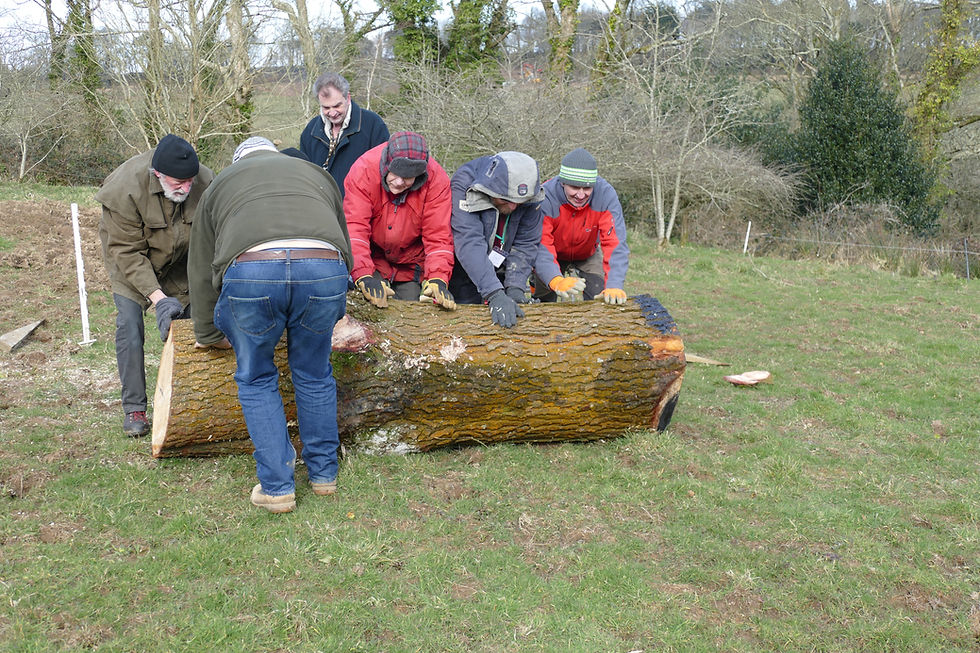Beekeepers, Bees and the Bien
- Natural Beekeeping Trust
- Jan 13, 2017
- 4 min read
Updated: Feb 9, 2020

A beekeeper looks a swarm in the eye
(credit: Tucka Sackville)
Dear Readers
In celebration of the lengthening days (at least in the northern hemisphere), this blog piece introduces and links several concepts and finishes with a video of a short talk by a leading bee researcher. We hope you enjoy the reading and the viewing, and that it stimulates thoughts.
Beekeepers
In a Facebook comment, a beekeeper refers to 'my' bees, as in 'my' bees are flying. The placing of quotes around 'my' is to indicate that the bees do not really belong to the writer but are free creatures that just happen to live in hives he or she has provided.
When we talk about 'my’ bees, who is the 'I' to which the ’my’ refers? It refers, of course, to the speaker. 'My’ differentiates the bees in the care of the speaker from bees in the care of other persons, or from wild bees in the care of no one. The speaker sees him or herself as an individual separate and apart from others. He or she will particularly see themselves as separate from the bees. So we have a little triangle made up of beekeeper, bees and others, all clear and separate.
Bees
Now let us turn to an individual bee. We see bees as physically separate and we often refer to them as performing duties for the hive or for other bees; cleaning, feeding, collecting nectar and so forth. But does the bee see itself as separate? Watching robin redbreasts on a bird feeder leads one to conclude that robins certainly see themselves as separate. If a robin comes close to another robin, it engages in displays that are clearly meant to warn the other robin off. If the display does not work, fighting ensues, with beaks thrust at necks and the potential for injury.
Yet such behaviour is never seen with bees feeding on flowers, even when many bees are present in the same flower, such as when they roll in the pollen of a poppy in high summer. The only time a bee engages in threats, or violence, to another bee is at the entrance to the hive. When this occurs, the bee is not acting like the robin to protect its individual food or territory, it is protecting the hive, the whole. The same can be said of bees and humans. A bee will never sting a human when it is visiting a flower. Even swarms are generally very tolerant of handling, as seen in the photo above. It is usually only when the hive itself is threatened that bees sting. When one sees beekeepers handling hives with no protection, this is because those beekeepers know how to make the hive feel safe.
The Bien
Of course, if the hive feels threatened, stings will ensue. This is often described as an act of altruism, a bee laying down its life for its sisters. But is this really what is happening? Although they may be physically separate, if bees do not see themselves as individuals in the way that humans or robins do, there can be no separation in the bee's mind between itself, as an individual, and the whole hive. This leads to the concept of the colony as one whole being forming, to borrow a German word, the Bien. So it is not the bee that is stinging to protect itself, it is the Bien. There is no difference between the two.
Thus, when we say 'my' bees, that may be true from a human viewpoint, but it is a meaningless statement from the viewpoint of the bees. For a bee there is no 'my'. There is no 'I'. There is only the whole, the Bien.
This wholeness is a tricky concept for us humans but, if we can grasp it, it may prompt us to consider how the world looks from the viewpoint of the Bien. If we make this mental shift, the first thing we realise is that the world may not look the same to the Bien as it looks to us. When we think of the hive, it is easy to do so embalmed in preconceptions that we hold as individuals. (There are, in fact, two layers of preconceptions here; some we hold as individuals and others we hold about being individuals - we said it was tricky.) While many of these preconceptions may be fragrant to us, they may hinder our efforts to assist the Bien.
So, how do we unwrap the preconceptions that embalm us? That is a long and detailed story, but the short answer is we turn to careful observation. Good science engages in careful observation and can illuminate and question some of the many conscious and unconscious preconceptions we all hold. In this regard, it is gratifying to see that science now underpins a great deal of bee-centred beekeeping.
There is a reference to this science on the resources page of our website and very soon this will be searchable. In the meantime, it is worth mentioning a recent conference in the US called Bee Audacious, which sought to challenge some of the preconceptions we all have about bees and beekeeping. The wrap up session was videoed and Tom Seeley's short piece is particularly thought provoking. It starts here.
Best wishes
The Trustees of the NBKT
Heidi Herrmann, Gareth John, Rachel Hanney, Jonathan Powell, Matt Somerville

If you like our approach, please help our advocacy by making a donation towards our costs.





Comments